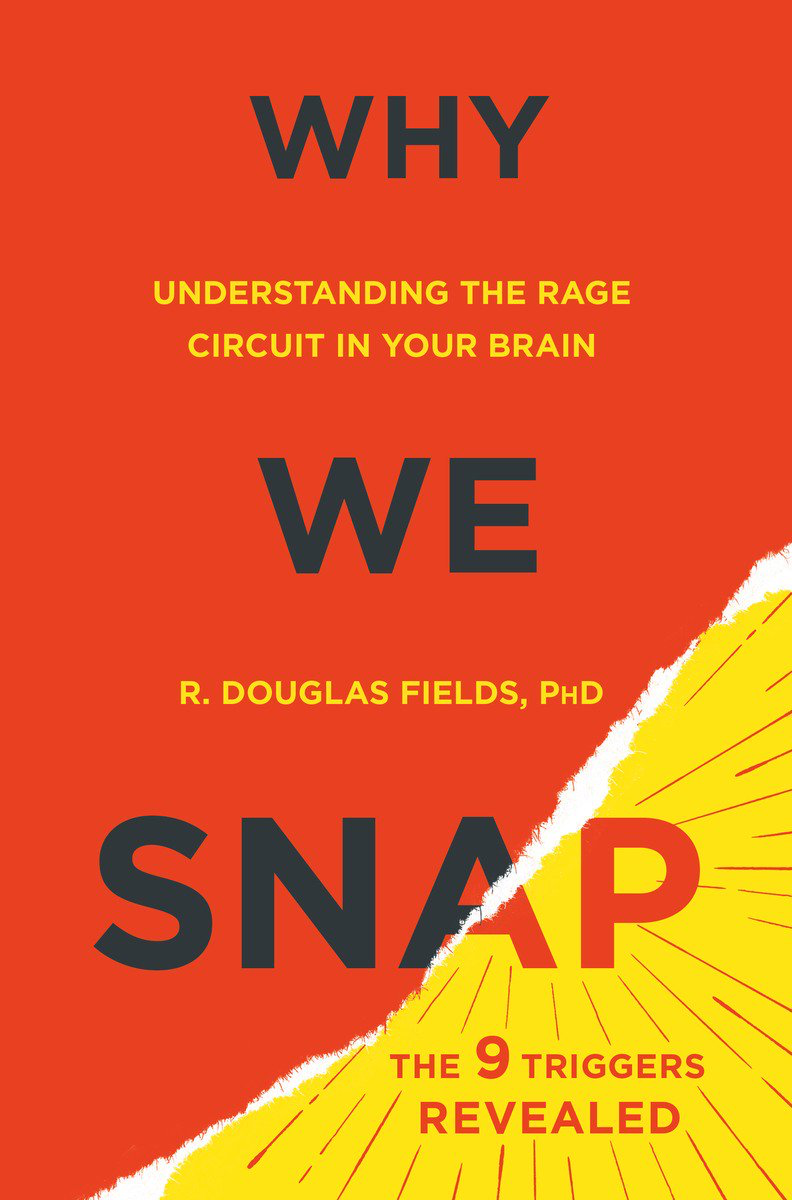“When I heard the facts, I thought, ‘That’s what Dave is capable of,’” climber Matt Kull said about his former rock climbing partner, David DiPaolo, in a magazine interview shortly after DiPaolo had been arrested and accused of killing 69-year-old Geoff Farrar at Carderock Recreation Area in Maryland, a few days after Christmas 2013.
Farrar, grey-haired, lanky, and boisterous, was a mentor to many young climbers, and was well known in the cliff-scaling Carderock community, where steep rocks rise above the Potomac River just outside Washington, D.C. As a climber in this area myself, I was acquainted with both men. Farrar had taken DiPaolo under his wing as a teenager and taught him to climb nearly 20 years earlier. They’d stayed close, maintaining a bond between mentor and protégé, until that shocking day when DiPaolo killed Farrar with a claw hammer at the foot of the cliffs they’d climbed together so many times.

WHAT I LEFT OUT is a recurring feature in which book authors are invited to share anecdotes and narratives that, for whatever reason, did not make it into their final manuscripts. In this installment, author R. Douglas Fields shares a story that didn’t make it into his latest book “Why We Snap: Understanding the Rage Circuit in Your Brain.”
“I’m sorry this happened. I didn’t want it to happen. I didn’t know it was going to happen,” DiPaolo told police in a written statement after he was arrested.
How, then, did it happen?
We often dismiss such disturbing murders as the result mental illness, or rather comfortably conclude that an otherwise normal person “snapped,” or became momentarily deranged. Self-delusion may be easier than accepting the alternative. “I think anyone is capable of it,” University of Alaska forensic psychologist Bruno Kappes told me when I asked how we can comprehend someone suddenly snapping in a violent murderous rage.
The fact is, rage can explode without warning. Overpowering judgment, compassion, fear, and pain, the fiery emotion serves one purpose — violence, both in words and actions. It may help explain why homicide is responsible for nearly 16,000 deaths in this country every year, according to the U.S. Centers for Disease Control and Prevention. And it may definitely help explain why people are far more likely to be murdered by a friend or acquaintance than by a stranger.
It’s important to acknowledge that powerful emotions like rage and fear can lend us power in a crisis. They can give a petite woman the strength to move a car and free a trapped child or drive a soldier against normal instinct to run into a hail of bullets to save a comrade in jeopardy. Such rapid-response brain circuitry undoubtedly played a role when U.S. Air Force Staff Sargent Spencer Stone and two friends subdued a fellow train passenger — a terrorist armed with an AK-47 and a knife — in France last summer. “I really wasn’t thinking,” Stone told me. “It wasn’t a conscious decision — I just went. It was automated.” Stone and fellow Americans Anthony Sadler and Alek Skarlatos, were all recognized for heroism in that case. But sometimes this automatic lifesaving response can misfire and lead to a story of unexpected tragedy rather than heroism.
The events that led to Farrar’s murder unfolded gradually. In the beginning, reports suggested that Farrar had died in a climbing accident. John Gregory, who wrote the guidebook to climbing in the area and knew both men for years, first reported that Farrar had fallen and hit his head on a sharp rock, sustaining fatal head injuries. But suspicion grew that DiPaolo, who was suddenly missing from the area and who had been also climbing that day, had been in some way responsible.
In fact, Gregory had apparently put out the false report to give police time to track down their suspect. When police captured him nearly two weeks later in Glens Falls, New York, DiPaolo claimed self-defense. Farrar had attacked him, DiPaolo insisted and while battling on the ground he grasped a hammer that happened to be lying on the path and used it to break Farrar’s stranglehold. People who knew both men were skeptical.
Finding a hammer on the trail seemed improbable, and it was difficult to believe the young, fit man would need to use such brutal force to fend off a 69-year-old. But in the absence of evidence yet to be made public, the climbing community hotly debated the case. Was it murder or self-defense? “I hope it wasn’t premeditated in any way,” a climber who knew DiPaolo and Farrar said to me in a discussion shortly after DiPaolo’s arrest. “I do genuinely believe that he didn’t go to Carderock thinking he was going to kill Geoff.”
On February 1, 2014, two days after DiPaolo was indicted for voluntary manslaughter, I went to Carderock to meet with Gregory, whom I have known for years, and who is so well regarded in the community that his nickname is “The Mayor of Carderock.” He took me to where he found Geoff Farrar laying diagonally across the path. He molded the shape of the body with his hands in the air as he evoked the scene and pointed to a shallow hole at the edge of the path. Police had dug out the bloody rock and taken it as evidence.
“I couldn’t recognize him. I couldn’t recognize it as being human at first. It had no head, just a purple bloody mass,” Gregory said describing the horror of the scene.
He had heard some of the attack scenario and it fit with what he had seen: “The first blow was to the top of the head at back. Came around the corner, hit him from behind. Then hit him in the right temple. A huge swelling about the size of a baseball. Then left face, probably shattering the orbit bone because his eye was out of socket. And then apparently broke his jaw.”
“This doesn’t sound like self-defense,” I said shocked to hear this gruesome account so different from what was in the news.
“No.”
Gregory said he realized immediately that it wasn’t a climbing accident from where the body lay with respect to the climbing route and because the victim had no scrapes on his legs and arms that a climber would have suffered in a fall.
“He was very savagely attacked. The entire thing took less than three minutes.”
Police and medics responded quickly to Gregory’s 911 call. “Everybody looked at that injury and stepped back. They didn’t have a dressing big enough to put around it. A park policeman followed the sirens and got a helicopter. Did the most amazing extraction I’ve ever seen. They swung the cable in, attached it right over the river. That guy was hovering right above the trees. You had to get down on the ground and literally hold on to everything you had and you were getting pummeled by all the dead tree limbs.”
“It was a very quick extraction as far as the golden hour goes. Geoff had everything going for him…but I remember, you know, very early on…in fact, when I was dialing the phone, saying, shit. I hope he doesn’t live.” He sniffed sharply. “Because this is terrible. This is just terrible. You know, surviving this is not good. It is not the best outcome.”
“His wife calls on her way to the hospital,” Gregory tells me. “They’re asking her, ‘What are his wishes?’ He pauses, tries to describe the impact of that message as she translated it: “And they say, ‘Look his brains have come out of the cracks in the sides of his skull. Things are not going to work out here.’
“She said, ‘Well, let him go.’”

In the absence of evidence yet to be made public, the climbing community hotly debated the case. Was it murder or self-defense?
Visual: Jarek Tuszyński/CC
Gregory sniffs sharply again, but maintains his composure. “He died at 8:00 that night. She arrived around 9:30.”
As Gregory relives the horror, shock is now mixed with despair.
“The single most important thing to know is that for both the victim and the perpetrator, the argument in the parking lot was the end of a 20-year relationship. “That changed everything. Geoff said so.” Gregory had witnessed Farrar and DiPaolo engaged in a loud argument in the parking lot on that fateful day as he was unloading his vehicle to go climbing. Immediately after the argument, Farrar told Gregory, “Well, I’ve been a friend to Dave for 20 years, but I guess it’s over now.”
Months after my meeting with Gregory, DiPaolo changed his plea to insanity. No one who knew DiPaolo considered him insane. Stories of drug-fueled erratic behavior circulated throughout the Carderock group. “I just thought he was sort of a burnout, that he had done too many drugs and possibly still did. I certainly never saw him as someone who would hurt anybody else,” a climber who’d known him for years told me after the arrest.
Everyone was hoping for answers, but two winters passed while legal maneuvers deferred the trial. In that same time period, the Aurora shooter and Boston Marathon bomber had their trials, but justice in the Carderock homicide seemed to be drifting away. “I need to leave this behind,” Gregory told me after returning home from court, unable to testify because of yet another delay in the proceedings. “Geoff is nowhere in this. I can’t do any more for him.”
And Gregory never would testify in court. DiPaolo eventually accepted a plea bargain rather than face trial, formally signing a confession admitting that he killed Farrar in a fit of rage. On July 18, 2016, DiPaolo was sentenced to 10 years in federal prison for voluntary manslaughter.
Impulsive violence has long been studied by neuroscientists. For many years, researchers postulated that this kind of aggression was based in a region of the brain called the amygdala, which is associated with fear, and with a subdued level of activity in the prefrontal cortex, known for its cognitive functions and role in rational behavior. Research has shown, for instance, that aggressive boys tend to have a high level of activity in the amygdala and a correspondingly low level of activity in the prefrontal cortex.
But more recently, neuroscience has taken a more critical look at the so-called “lizard brain” concept of the amygdala and limbic system driving people to commit beastly acts. A new generation of research points instead to distinct neural circuits in the hypothalamus — associated with drives such as thirst, hunger and sex — which appear to respond with saber-rattling speed to different types of threats and provocations.
These circuits of aggression are part of the brain’s threat detection mechanism embedded deep in hypothalamus. In experiments, when this tiny knot of neurons (technically, the ventromedial hypothalamus) is stimulated by an electrode, an animal will launch into a violent attack and kill another animal in its cage. If the region is inactivated, aggression abruptly decreases.
And there is an evolutionary context to such biological influences. Sudden aggression — sometimes referred to as the fight-or-flight response — is vital to our survival, but engaging in violence simultaneously puts our survival at risk. For this reason, only a few specific triggers will activate the brain’s rage circuits for sudden aggression; but once tripped, the reaction can be overwhelmingly strong. “I was going to go down fighting,” Stone told me of his encounter on the train in France. “It was an ultimate fight for survival,” he said. “I was willing to kill him because he was willing to kill me. He was obviously trying to shoot me and he cut my throat with the knife so it became…not barbaric, but I was going to do anything in my power to try and stop him.”
As Gregory described the quarrel he witnessed between Farrar and DiPaolo, “Dave stood there and said, Oh yeah? Come on, punch me! Punch me!” Puts his arms out to the side — Punch me!” Farrar did not take the bait, and DiPaolo stormed off to his car where, because he did occasional odd jobs, he kept his carpentry tools.
The roots of violence and the neural circuitry that lies behind such responses, run deep. In a social species, an individual’s success and access to resources depend upon one’s rank within society. Aggression, especially among males, is often how dominance in the animal world is established. Human beings have language, and verbal head butting can quickly escalate into explosive violence. “Police are searching for a motive…” we always hear, but it is a search in vain. Such violence is not driven by reason. It is driven by rage.
What is missing from the baffling news reports of someone suddenly snapping violently is the backstory of chronic stresses on the individual that lower the threshold for triggering these circuits of violence. Prior to the homicide, DiPaolo had become something of an outcast, increasingly shunned for recklessness and his slovenly, drug-head manners and attitudes. His former climbing partner, Matt Kull, told Outside magazine that he’d severed the relationship because of DiPaolo’s drug use while climbing and his growing disregard for the safety of himself and other climbers. This was reinforced by the many interviews I did as well.
DiPaolo had taken to living alone in his car. “The last time I saw him he looked very bad,” Tom Cecil, owner of Seneca Rocks Mountain Guides told me. “I actually considered offering him some odd jobs to try to help him out, but he was just too fucked up looking and acting,” Cecil said. Farrar, who could be as critical of careless climbing as he was supportive, had taken to criticizing DiPaolo’s failings in public. DiPaolo’s status in the climbing community continued to plummet. “You know, people just saw him as sort of a loser,” a climber said.
Looking back, we can identify many of the elements that might lead a person, struggling with drugs and other challenges, to snap into rage. We can also recognize the elements and influences that might lead a person, like Stone, to channel his anger into positive action. “All this stuff was kind of in me beforehand,” Stone says. “My mom raised me, my brother and sister, by herself. She put us before her wants and needs. She did what she had to do. That was kind of built into me. I like to help other people. I care…you know, almost to a fault.”
Only eight weeks after battling the terrorist, Stone was nearly killed by a knife-wielding gang member after leaving a bar with friends in Sacramento, California. “Once again I put myself in front of the other people [who were being threatened],” he says in disbelief. While he was recovering from knife wounds, and no doubt learning to cope with disability, I asked how the violence had changed him. Would he react differently in the future? “It has definitely changed my life for sure,” he said. “No, I’ll react the same. That’s just the way I’m wired.”
But recognizing the importance of biology in our behaviors — even learning from them — holds only some of the answers we need in the face of tragedy. In the spring after his death, a remembrance was held for Farrar on the same rocky spot that had been the scene of the deadly dispute at Carderock. People set out a picnic under a tree, took turns recalling snippets of his life. It was a glorious spring day, but suspended in the atmosphere was a heavy sense of senselessness, emptiness, anger, and sorrow. Mostly it seemed unreal. And in the end, it was a reminder, that we are responsible for our actions, and we — all of us — live with the consequences.
R. Douglas Fields is a neuroscientist.











Comments are automatically closed one year after article publication. Archived comments are below.
An excellent article, helping shed light on one of the most difficult problems – that of the inner workings of human consciousness that result in what we often think of, fatalistically, as innate tragic flaws in our existence. So difficult – but, I maintain, not impossible – to see into ourselves and our species objectively.